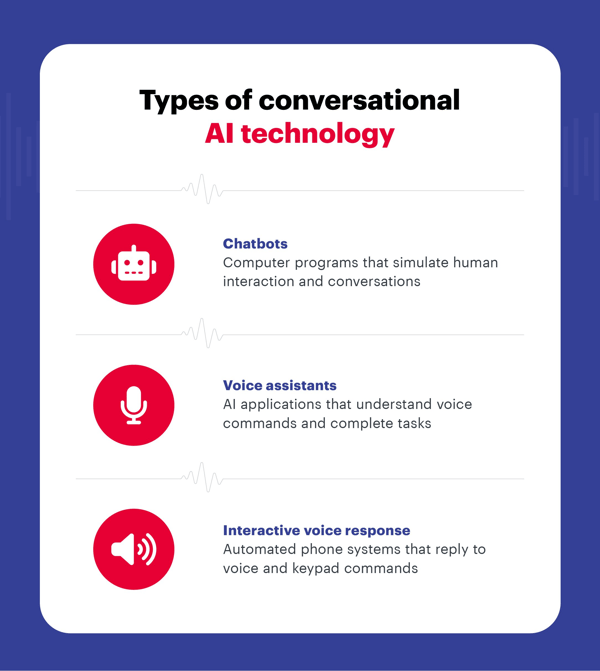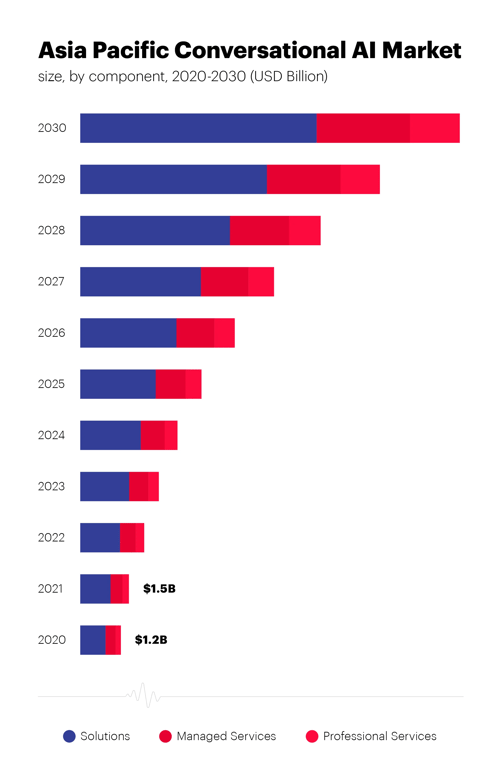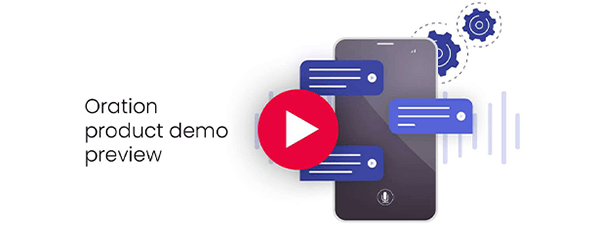The past few years has seen a significant shift in expectations for customers when reaching out to businesses, with studies showing 67% of people now prefer self-service over speaking to a company representative1. Coupled with findings that 81% of consumers want more self-service options2, it is clear there is no time to waste in the self-service race.
Amid such change, many customer centres have identified conversational AI as an obvious choice for enhancing their capabilities. Any tool that can eliminate hold times, resolve tier-1 issues and free agents of repetitive work is going to be popular and so it is with conversational AI. The more difficult choice many businesses are facing is whether to create a solution in-house or source one from a vendor.
Or, to put it more simply, should they build or buy?
What is conversational AI?
Conversational AI is a type of artificial intelligence that can simulate human conversation. It is made possible by machine learning and natural language processing (NLP), which is used to analyse the meaning of text and speech and to generate responses that are appropriate and relevant to the conversation. A study by renowned consultancy Accenture has found the global market for AI that can have conversations is expected to grow to $32.6 billion by 20303.

Source: What is conversational AI? How does it work? (zendesk.com)
The build approach
Building conversational AI in-house can sound like a good idea. You get total control over the technology. Every decision you make is highly personalised and you can deploy on your own terms. You are effectively the master of your own domain. The big question is do you have the resources to manage such a project or are you willing to invest in them to make it a reality?
Building conversational AI can be done but it is often a massive project, requiring specific skills sets that are in high demand. For example, data scientists to analyse and manage conversational data and the underlying set of intents, conversational user interface designers to consider the conversation flows and integration specialists to integrate into contact centre platforms and backend systems.
The need for specialist resources remains ongoing once the solution is live as Conversation AI, like a human agent requires oversight and ongoing training to remain up to date with customer requests and company products and policies. Few organisations have such specialist staff already within their teams, meaning they need to be recruited to manage the process and that not only costs money but, more crucially, time.
Across two decades in the sector, I have seen organisations employ teams of up to twenty people to build their own conversational AI solutions and take six to 12 months to even reach launch day. These types of projects carry high capital costs and the slow time to market erodes business benefit and carries additional risk that the solution will be out of date by the time it is deployed.

Source: Conversational AI Market Size, Share & Growth Report, 2030 (grandviewresearch.com)
The buy approach
Businesses that opt to buy conversational AI technology undoubtedly forfeit some control compared to those who choose to build. However, that is a small price to pay when factoring in the numerous benefits of teaming with a specialist provider.
Lower costs: from labour and infrastructure costs to ongoing maintenance expenses, building conversational AI is a costly exercise. Alternatively, vendors that specialise in conversational AI have economies of scale that ensure cost-effective solutions and can roll out updates and advanced features for lower prices due to the sheer size of their customer base.
Speed to market: easily one of the most attractive features of the buy approach is the express time to deployment. Whereas building one’s own conversational AI can take up to six months to get to market, ready-made solutions only require a handful of weeks of configuration and onboarding. Look no further than Oration by Convai, which has been deployed for some customers in mere days. Furthermore, it is a fully formed and multi-faceted solution that has proven time and again to deflect calls, identify callers and determine intent all before a customer reaches an agent.
Best practice: conversational AI is a rapidly evolving and highly technical field, which is why many businesses prefer to partner with specialist vendors than go it alone. Rather than invest significant resources searching for individuals to bring their ambitions to life, they prefer the peace of mind of buying a trusted experience out of the box and working with expert teams who have rich histories in executing conversation design.
Ability to self-manage: conversational AI is a complex beast but quality vendors have systems in place to ensure their clients can maintain momentum after initial deployment. In the case of Oration by Convai, the tool has been built so customers can maintain the IVR solution themselves and ensure a continuum of capability. Whereas someone who buys a car needs to visit a mechanic for ongoing servicing, Oration has been designed so that it is incredibly easy to see what is under the hood and driving the engine.
Ongoing support: while 90% of Oration users self-manage the technology, there is a smaller cohort that seeks occasional support and others that benefit from the Convai team fully maintaining their IVR solutions and performing the tuning for them. While such support is invaluable for those who embrace it, they are in the minority because most businesses appreciate having the capability to make changes immediately without needing to follow the traditional process of filing a ticket with their IT teams and waiting up to days for action.
Summary
Stepping into the conversational AI space is challenging enough without burdening oneself with the pressure of doing it all on their own. Starting from scratch is not for the fainthearted but for those who remain committed to doing so, there is a simple question they should ask themselves - is conversational AI a core competency for our business? If the answer is yes, they likely have the right people, systems and technology in place to manage the process. However, if the answer is no, there are plenty of vendors with cutting-edge products that can deliver faster deployment and greater support in a much more cost-effective manner.
A growing number of contact centres are investing in technologies that allow customers to verify their identity without needing to interact with human agents or present any physical material. Discover the call centre authentication techniques that are empowering callers.







